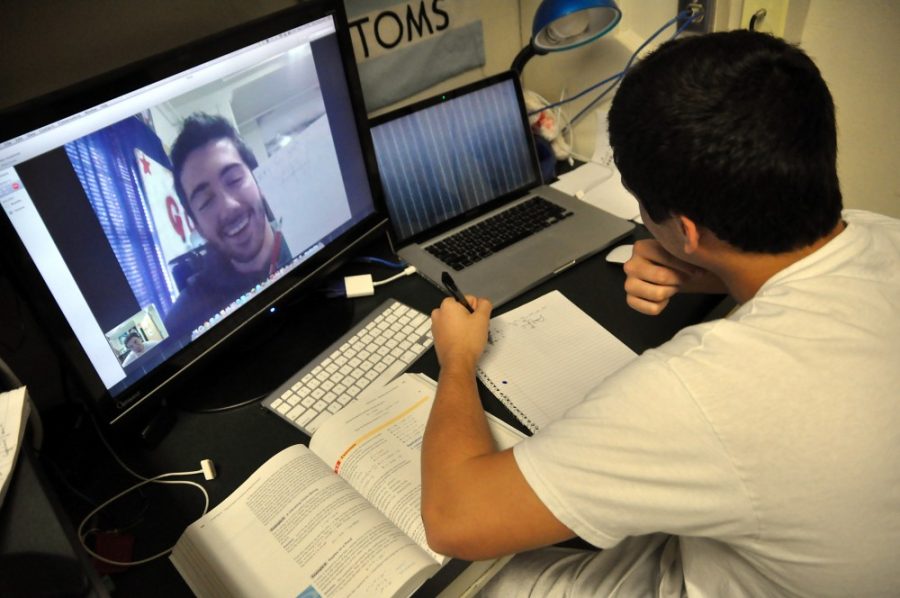UA departments and colleges are increasing their use of video and web conferencing in the classroom, as well as their ability to teach students from hundreds of miles away.
The UA’s Outreach College uses web and video conferencing services, like Interactive Television, for their students who are unable to make the trip to campus on a regular basis.
“It’s all about access for a student,” said Melody Buckner, instructional design specialist for the Outreach College. “We’re the ones who help the faculty take their content to those students who can’t typically make it to main campus when most classes are offered.”
The college is able to connect with classrooms from all over Arizona including Nogales, Sierra Vista, Casa Grande and an upcoming addition in Chandler. With the Interactive Television system, a single professor can teach in multiple locations at one time.
“The big thing with faculty is how to use this technology for the most effective teaching practice,” Buckner said. “And how they will be going to interact with different students who are at different locations and yet make them feel like they are part of the classroom.”
Because of this equipment, the Department of Systems and Industrial Engineering can provide distance learning courses via live streams of lectures to a classroom in Yuma where students watch and participate.
“We can interact with them live,” said Larry Head, head of the department and instructor of a distance learning course. “We can see them, they can see us and they can present their projects or whatever else needs to be done.”
The streaming of the lecture also gets saved as a video where students can re-watch the lecture on their own time.
“What I find really helpful about this is if I present something in class that students don’t understand, they can just go back and watch the video,” Head said. “We have been doing this type of learning for the last four years and it has been great.”
According to Lance Hoopes, information security and technology director for the Eller College of Management, the growth of video communication for the UA is due to a multitude of things but some of the major reasons are because it is less expensive than traveling and also saves time by avoiding the commute to campus.
“I think as time goes on you will seen an increase in both video and web conferencing,” Hoopes said. “We can convert more classrooms with this video capability so that professors can have that option.”
There are two types of video services the UA is able to host in some classrooms on campus. The first is web conferencing, which typically uses minimal equipment like a webcam and programs like Skype. The second is video conferencing, which typically uses a camera and involves video streaming.
While some faculty at the UA see the increased use of video technology as a step in the right direction, some students wonder how it will affect their education.
Jessica Cabrera, a pre-business sophomore, said for one of her classes the professor arranged for a guest speaker to talk to the class via Skype. Cabrera said she doesn’t think she could learn that way on a regular basis.
“For that particular occasion it was okay,” Cabrera said. “But students pay money to be here, and I expect my teachers to be here as well.”









